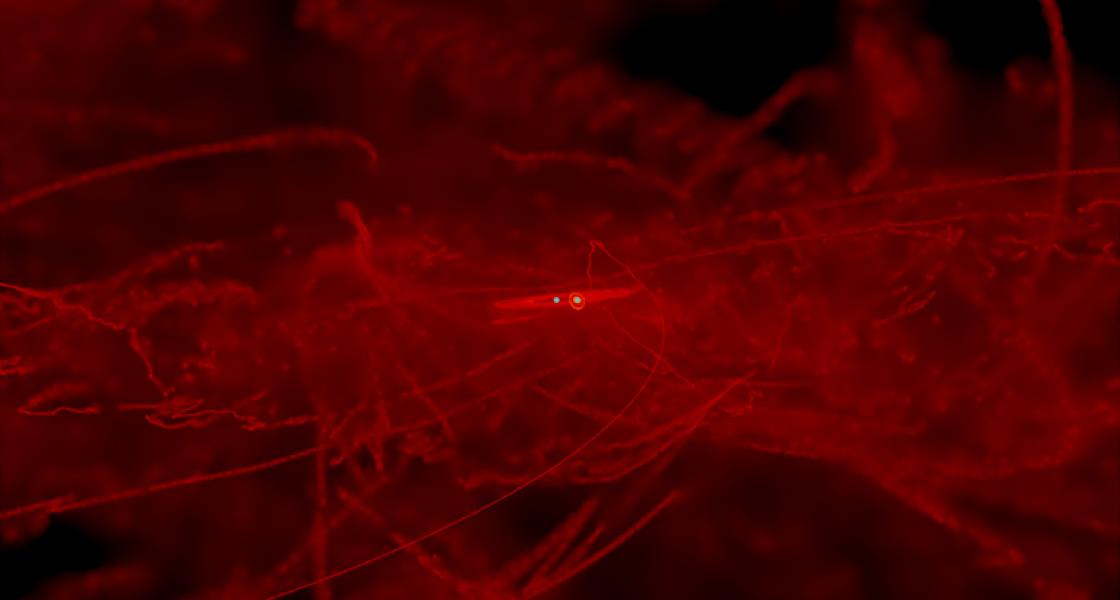Galaxy mergers routinely occur in our Universe. And, when they take place, it takes years for the supermassive black holes at their centers to merge into a new, bigger supermassive black hole. However, a very interesting thing can happen when two black holes get close enough to orbit each other every 3–4 months, something that happens just before the two black holes begin their final desperate plunge into each other. And, according to former JILA graduate student Eric Coughlin and his colleagues, if one of the black holes happens to tidally disrupt an errant star, the process will send out a signal that will allow Earthlings to “see” which galaxies contain these pairs of black holes.
“If two black holes happen to be that close together, and a star gets disrupted by one of the black holes, there’s a reasonable probability that the debris stream will actually miss the black hole that disrupted it and hit the second black hole,” said Mitch Begelman, Coughlin’s thesis advisor at JILA. “You get this kind of dance between the two black holes, and of course you get fantastic flow patterns that are just neat.” Begelman added that these flow patterns create a distinctive signal that there are two black holes involved in the tidal disruption of a single star.
Right now, existing space-based telescopes could detect one of these events every few years. However, in 2019 or 2020, the huge Large Synoptic Survey Telescope (LSST) will come online. And, thanks to Coughlin’s new study that tells astronomers what to look for, the LSST should be able to see a handful of the binary black-hole mergers every year among the many galaxies in our Universe.
“It is a notoriously difficult thing to discern the presence of one black hole, and this is a way to find two,” Coughlin explained. “We think binary black-hole systems should be common, considering how we think our own galaxy evolved via multiple galactic collisions.”
Coughlin said that astronomers now have a new probe in tidal disruption events, which are well understood, to learn something about the evolution of galaxies. As part of his research into tidal disruption events and how they can be used to identify pairs of black holes in the center of merging galaxies, Coughlin has created a stunning animation of the process in action.[2]
The researchers responsible for this work include recently minted JILA Ph.D. Coughlin, recent visitor and former research associate Chris Nixon, and Fellows Phil Armitage and Mitch Begelman.––Julie Phillips



 The Physics Frontiers Centers (PFC) program supports university-based centers and institutes where the collective efforts of a larger group of individuals can enable transformational advances in the most promising research areas. The program is designed to foster major breakthroughs at the intellectual frontiers of physics by providing needed resources such as combinations of talents, skills, disciplines, and/or specialized infrastructure, not usually available to individual investigators or small groups, in an environment in which the collective efforts of the larger group can be shown to be seminal to promoting significant progress in the science and the education of students. PFCs also include creative, substantive activities aimed at enhancing education, broadening participation of traditionally underrepresented groups, and outreach to the scientific community and general public.
The Physics Frontiers Centers (PFC) program supports university-based centers and institutes where the collective efforts of a larger group of individuals can enable transformational advances in the most promising research areas. The program is designed to foster major breakthroughs at the intellectual frontiers of physics by providing needed resources such as combinations of talents, skills, disciplines, and/or specialized infrastructure, not usually available to individual investigators or small groups, in an environment in which the collective efforts of the larger group can be shown to be seminal to promoting significant progress in the science and the education of students. PFCs also include creative, substantive activities aimed at enhancing education, broadening participation of traditionally underrepresented groups, and outreach to the scientific community and general public.